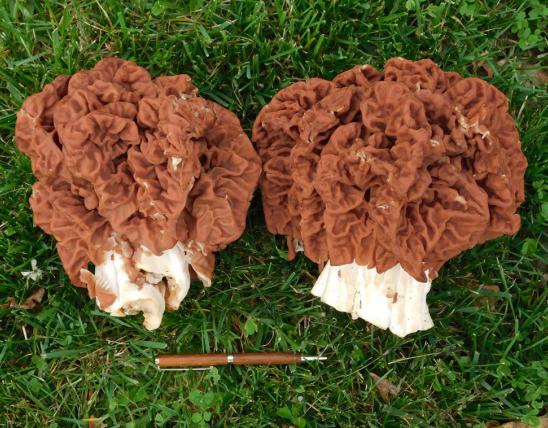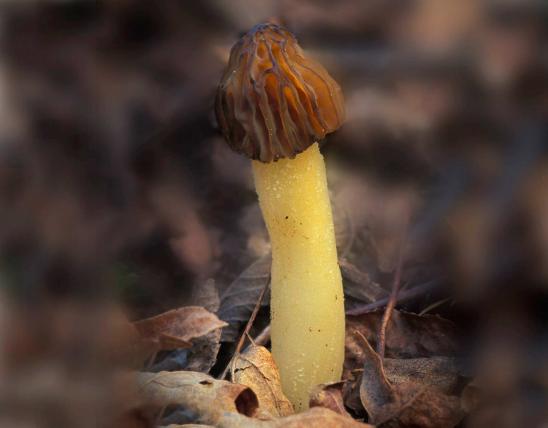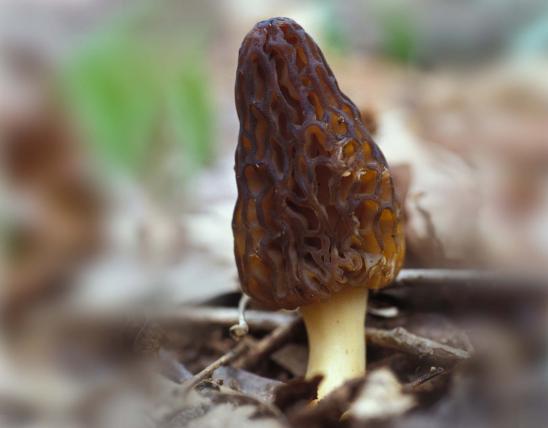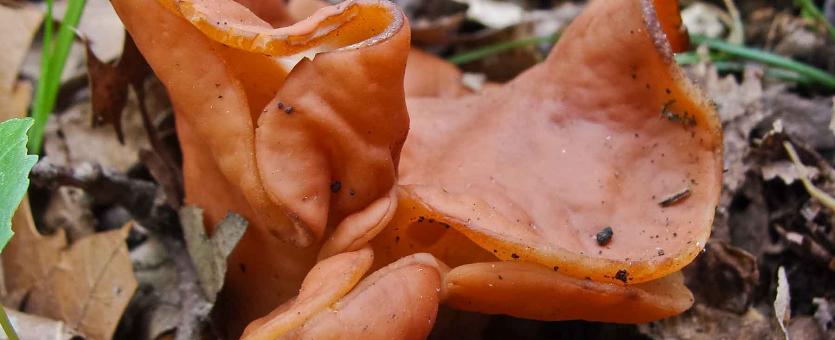
The gabled false morel has a reddish brown, lobed, wrinkled cap; the stalk is whitish and chambered inside (not hollow). It grows singly or in groups in mixed woods. Late March–May. The cap is wrinkled, often with large, saddle-shaped lobes; it is reddish brown outside, buff-tan inside; the cap margin is not fused to the stalk; the interior is chambered. The stalk enlarges toward base; it is whitish; the texture is grooved to smooth; it is chambered inside, not hollow. The spore print is clear to white. Spores magnified are elliptical, smooth.
Lookalikes: Missouri has at least two other species in genus Gyromitra, plus several other types with wrinkly, lobed, or folded caps.
- The big red false morel (Gyromitra caroliniana) is more brainlike than the gabled false morel, which has large, saddle-shaped lobes. The big red false morel also has a cap margin that is fused to the stalk.
- The snow false morel (G. korfii, syn. G. gigas) resembles the big red false morel but has a thick stem and squarish, blocky, tightly adhered cap. Cap color varies from tan or brown to rusty. It seems to be less common in Missouri.
- Elfin saddles (Helvella spp.) have caps that resemble saddles or ears, with lobes, folds, flaps, or wrinkles. The stems are often ridged or fluted. The color and form varies a great deal in this large genus, and some species look like false morels.
- Some people confuse true morels (Morchella spp.) with false morels, though spending just a little time comparing them and reading descriptions should prevent any confusion.
Cap width: 1½–5 inches; cap height: 2–6 inches; stalk length: 2–5 inches; stalk width: 1–4 inches.
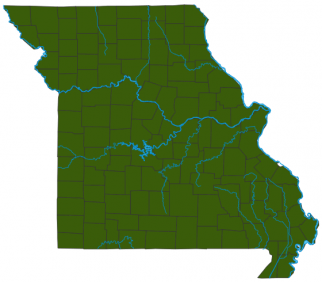
Statewide.
Habitat and Conservation
Grows singly or in groups, on the ground, in mixed woods, often near stumps or dead trees.
Status
Potentially toxic or deadly mushroom. While many Missourians have eaten various species of false morels with no ill effect, some related species in states to our north have caused serious illness and even death. The toxin is not completely understood, and it may build up over time to lethal levels. Not recommended.
Life Cycle
Mushrooms exist most of the year as a network of cells (mycelium) penetrating the soil or rotting material. When ready to reproduce, the mycelium develops mushrooms, which produce spores that can begin new mycelia elsewhere. For at least part of its life cycle, this species is a saprobe, feeding on decaying materials such as dead leaves or wood. It also might be mycorrhizal, spending part of its cycle connected to tree roots in a relationship benefiting both tree and fungus.
Human Connections
It is easy to get caught up in hunting mushrooms for eating. But keep in mind that inedible and even poisonous fungi have important roles in nature, and that they possess a beauty in color and form that only humans can enjoy.
Ecosystem Connections
Fungi and their fruiting bodies, mushrooms, are part of our natural environment. Their importance in forest ecosystems is monumental. Besides nourishing forest trees through symbiosis, they are also the wood rotters of the natural world, recycling nutrients back into the soil.

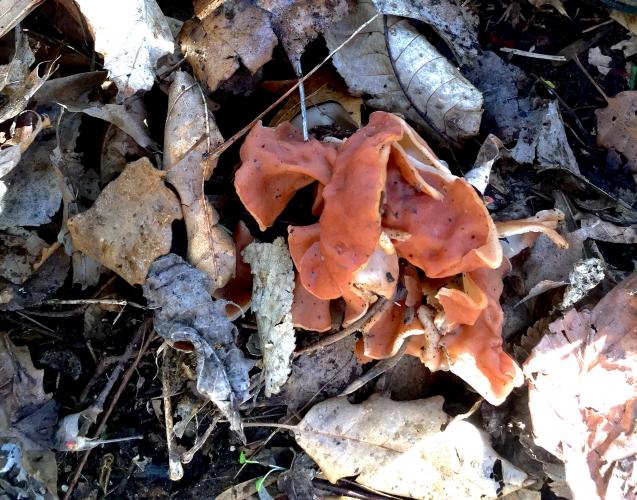


Mushrooms are a lot like plants, but they lack chlorophyll and have to take nutrients from other materials. Mushrooms are neither plants nor animals. They are in a different kingdom — the fungi. Fungi include the familiar mushroom-forming species, plus the yeasts, molds, smuts, and rusts.
Always be cautious when eating edible mushrooms. Be absolutely sure of the ID, and only eat a small amount the first time you try it to avoid a reaction..






















